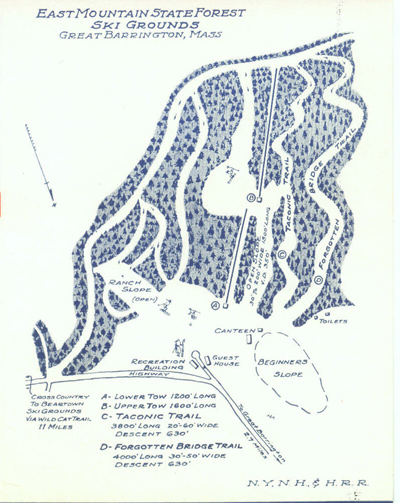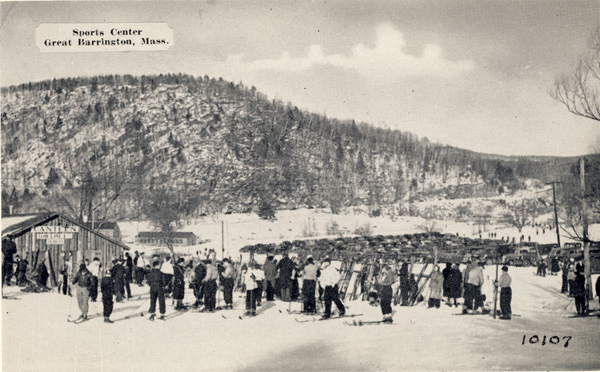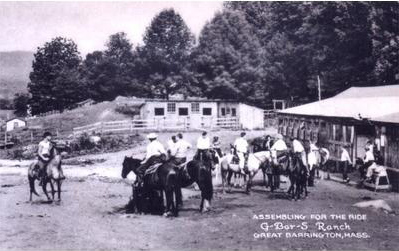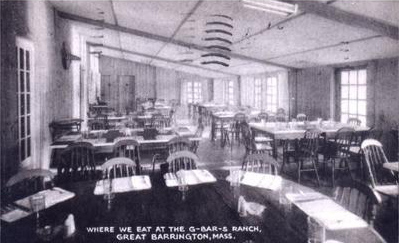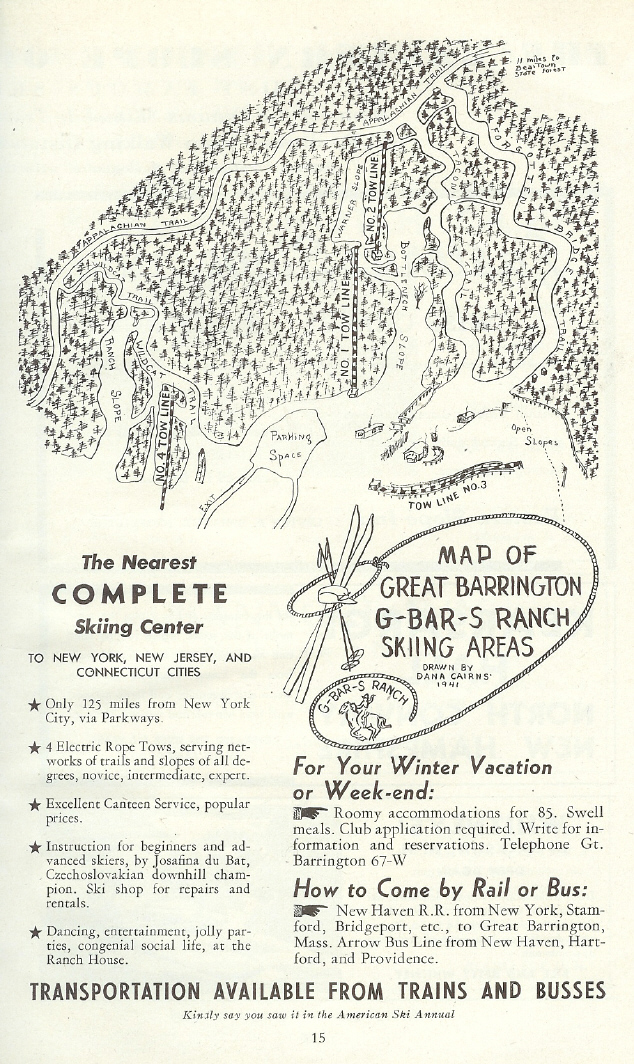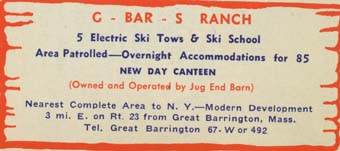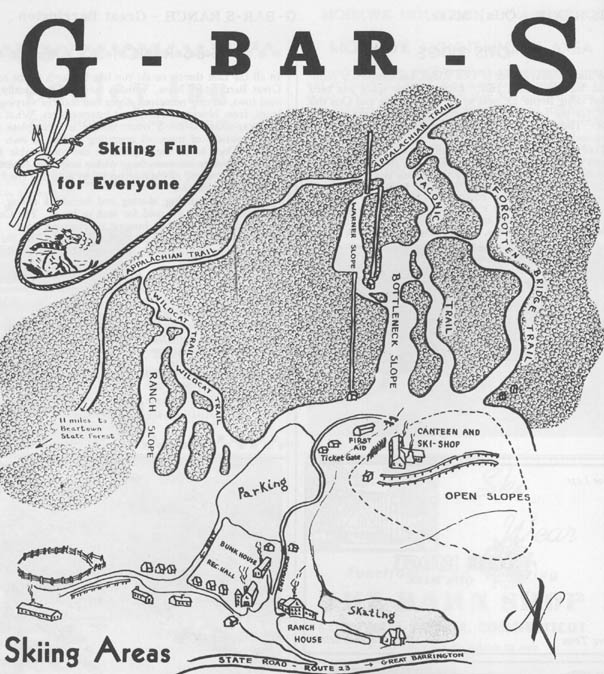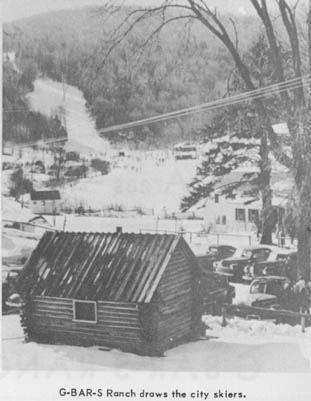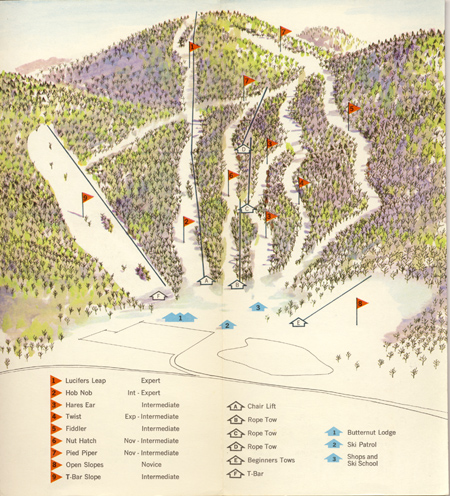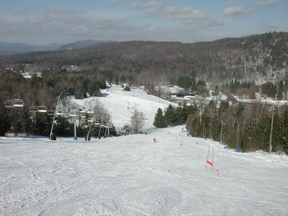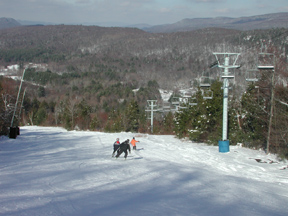The area grew in popularity with the snow trains, and changed names to the Great Barrington Sports Center, then shortened to G-Bar-S Ranch at some point during this time, with facilities added/improved for summertime ranch operations as well. In 1939, according to Skiing in the East, the area had 2 tows, a ski shop, canteen, an inn with accommodations for 45, and a parking area. A new Adirondack shelter had been built at the top.
The slopes in 1939 included the Bottleneck Slope, a wide, safe slope for all classes of skiers at 1500' long, 40-200' wide, 15 degree slope, and 300' drop. The Taconic trail was 0.75 miles long, 630' descent, 18 degree max grade, 20-60' wide, for novices and intermediates. The Forgotten Bridge Trail was parallel and similar to the Taconic, at 4000' long, 630' descent, 22 degree maximum grade, 30-80' wide and was for intermediates. The Warner Slope, was 2500' long, 50-250' wide, 600' drop, 15 degree max grde, and was for novices.
Beginners could also enjoy a beginners slope above the Canteen, and a Ranch Slope. All of these trails are still used today (more or less), with more information on them below.
To the right is a late 1930's trail map, showing the trails, courtesy of Woodward Bousquet. Please click on the map for a larger version and brochure.
